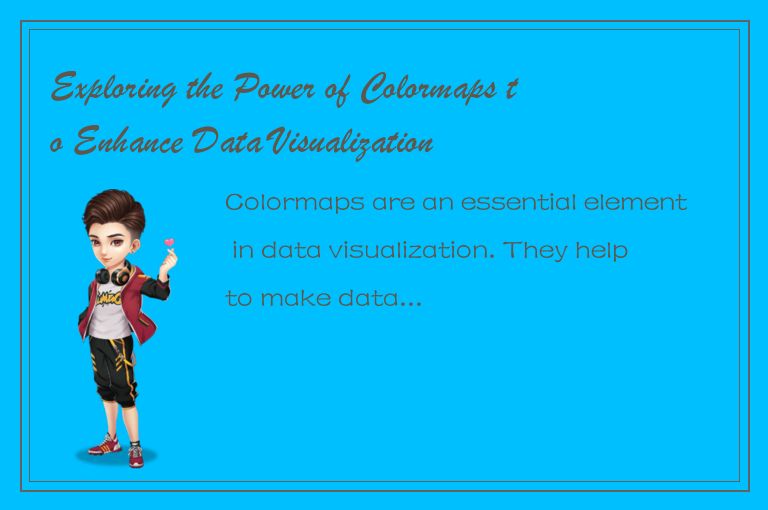Colormaps are an essential element in data visualization. They help to make data more comprehensible and allow for patterns and trends to be easily observed. There are numerous types of colormaps available, each with its advantages and disadvantages. In this article, we will explore the power of colormaps and the impact they have on data visualization.
What are Colormaps?

Colormaps are a range of colors that are assigned to data or a set of values. They are used to represent data vividly and help to make it more understandable. Colormaps are used in scientific, engineering, and business fields to present data in the most effective way possible. They can be applied to 2D and 3D plots, graphs, charts, and maps.
Types of Colormaps
There are several types of colormaps available. Some of the most commonly used ones include:
1. Sequential Colormaps: These colormaps represent data that ranges from low to high in a single color group. They are particularly useful for showing data that represents a continuous range, such as temperature or elevation.
2. Divergent Colormaps: Divergent colormaps are used to represent data that has a distinct midpoint. They are particularly useful for data that represents change, such as the difference between two temperatures. They show two different colors that move away from the midpoint, demonstrating a change in value.
3. Qualitative Colormaps: These colormaps are used to represent categorical data, where the data holds no particular order. An example of this could be the different species of a tree in a forest.
The Impact of Colormaps on Data Visualization
Colormaps play a crucial role in data visualization. They add a level of context and visual appeal to the data, making it more comprehensive. However, choosing the wrong colormap can lead to misinterpretation and confusion. It is critical to understand how different colormaps work and when to use them.
One of the most important considerations when choosing a colormap is to avoid using one that is too bright. This can make it challenging to read the data clearly and cause eye strain. A good colormap should be soothing to the eyes and easy to distinguish between different data values.
The second consideration when choosing a colormap is to ensure that it is not biased towards a particular dataset. Some colormaps may make it easier to observe trends in some data sets, while obscuring others. It is essential to choose a colormap that is impartial and represents the data in the best possible way.
Finally, it is important to understand that colormaps can be used to enhance data design. It is possible to use them to highlight specific data points, show data trends, and highlight critical areas. The key is to use the appropriate colormap for the specific data set and the message you want to convey.
Conclusion
Colormaps are a powerful tool that can greatly enhance data visualization. They add context and clarity to the data, making it more accessible and easier to interpret. However, it is crucial to use them properly, ensuring that the colormap is soothing to the eyes, impartial, and enhances the overall data design. The right colormap can help to bring the data to life and make it more understandable, while the wrong one can cause confusion and misinterpretation. Choosing the right colormap is essential for successful data visualization.




 QQ客服专员
QQ客服专员 电话客服专员
电话客服专员